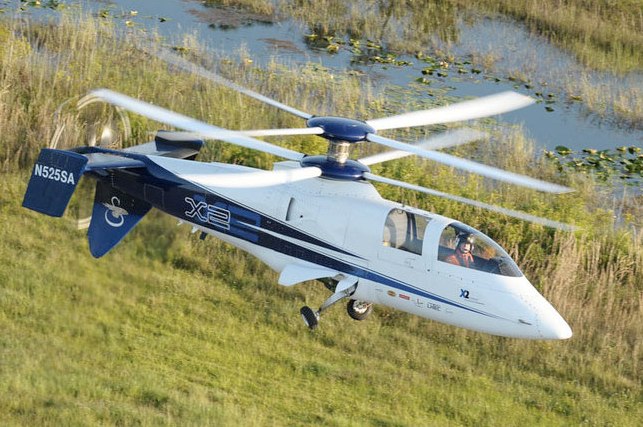

The Sikorsky X2 TECHNOLOGY™ demonstrator aircraft incorporates several new technologies and has successfully demonstrated them in a flight environment. These technologies include an integrated Fly-by-Wire system that allows the engine/rotor/propulsion system to operate efficiently, with full control of rotor rpm throughout the flight envelope, high lift-to-drag rigid blades, low drag hub fairings, and Active Vibration Control. In addition, the aircraft was used as a ‘flying wind tunnel’ to determine the main rotor to propulsion aerodynamic interaction, shaft angle optimization for performance, and blade tip clearance for a range of maneuvers. This will allow optimization of the X2 TECHNOLOGY™ suite for future products.
Having achieved its goal of flying the X2 Technology™ demonstrator helicopter at more than 250 knots (287 mph) — twice the average top speed of a traditional helicopter — Sikorsky will design, build and fly two more X2 Technology aircraft, and offer one of the aircraft to the U.S. Military for flight test and evaluation. Both prototypes will become the first of an all-new light tactical helicopter category — the Sikorsky S-97 — and will carry the designation S-97™ Raider™ helicopter.

The X2 is a great example of why the helicopter world needs fly by wire technology, and here's the reason: You need for torque to be equally divided between top and bottom rotors, or else (since the X2 doesn't have a tail rotor for management of main rotor torque reaction, like almost all the world's helicopters) it will spin out of control. Since you might also want positional synchronicity (i.e. upper and lower rotors rotating at the same speed), you can't use a torque-dividing differential like on the drive axle of a FWD or RWD motor vehicle. What to do then? Provide independent control of collective and cyclic pitch for the top and bottom rotors. Since that's too complex for the pilot to manage with conventional control linkages, one must resort to fly by wire.
FBW has been criticized by some writers in magazines such as Vertiflite and Flying magazine, as being dangerous because of the possibility of a coding error in the software. But the success of the V-22 and X-2 programs show it can be done, if that is the viability of FBW hasn't already been proven for all time with the F-16 supersonic jet fighter.